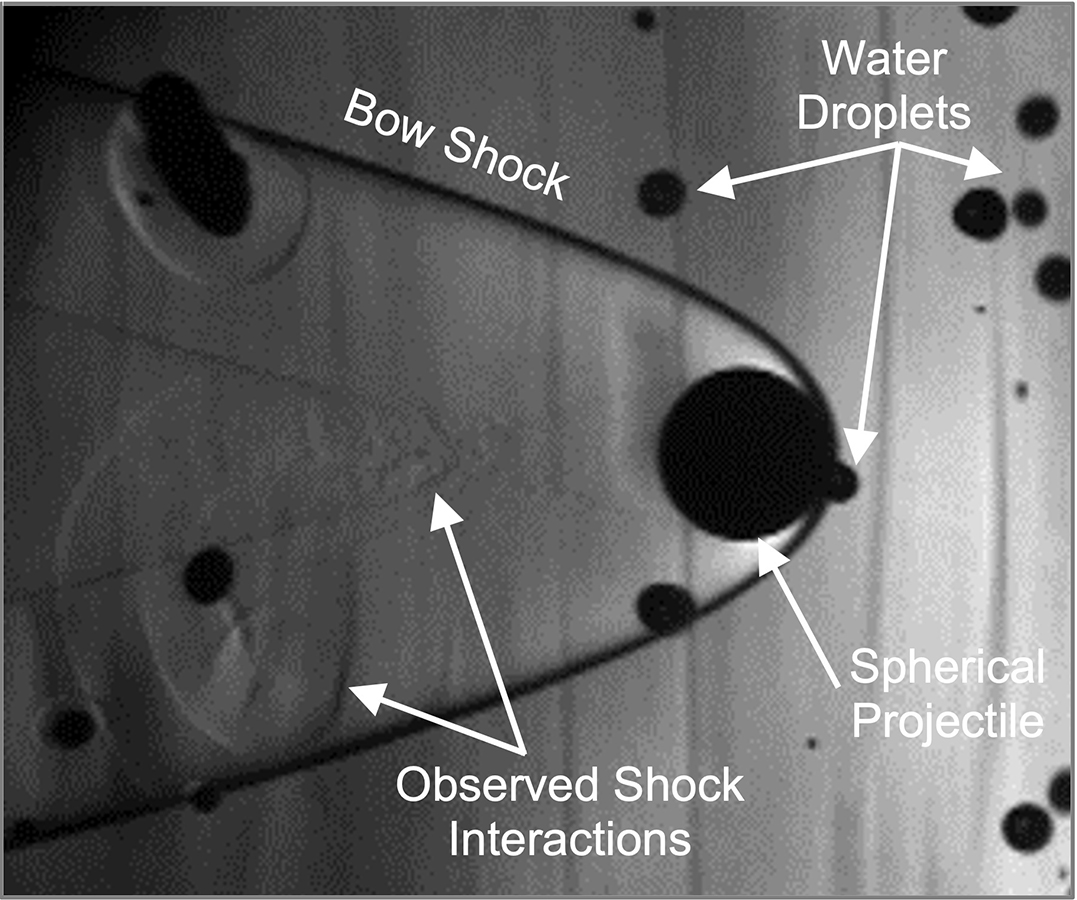Stay Up to Date
Submit your email address to receive the latest industry and Aerospace America news.
The Aerodynamic Measurement Technology Technical Committee advances measurement technology for ground facilities and aircraft in flight.
In January, researchers at Texas A&M University developed a suite of state-of-the-art laboratory testing and advanced in-situ optical diagnostic tools for analyzing near-space weather encounters of projectiles traveling at hypersonic speeds. When objects travel at hypersonic speeds through the air, atmospheric weather effects including rain, snow, ice and suspended particles can cause severe damage to surfaces and material systems and influence boundary layers, changing the overall flight path. Solid and liquid particle interactions on materials systems at hypersonic speeds are poorly understood and also difficult to predict by complex computational models. The Texas A&M activities simulated real-world phenomena by firing hypervelocity projectiles through particle fields, as well as impacting simultaneously launched fine particles on selected material targets.
In an article presented at the AIAA SciTech forum in January, the Texas A&M team discussed ultra-high-speed optical diagnostics of water droplet impact, breakup and shock layer interactions of hypervelocity projectiles. Megahertz-rate schlieren imaging and advanced processing algorithms enable the characterization of shock structures formed by the projectile and the associated shock-droplet interactions. Understanding these effects on the droplets and surfaces can reveal how shock layer interactions influence the boundary layer flow physics, surface erosion and impact damage, helping to improve leading-edge materials and shapes and ultimately improving hypersonic vehicle designs.
In February, construction was completed on the 2-kW Inductively Coupled Plasma Facility located at Texas A&M University. With the facility open, California-based MetroLaser, Princeton University in New Jersey, Texas A&M University and the University of Vermont began U.S. Air Force-sponsored research into plasma-material interactions related to hypersonic flows. The ICP facility generates a high-enthalpy, low-pressure plasma via an induction-coupled discharge and will be used to develop new methods for plasma diagnostics and testing of thermal insulating materials. The extreme aerothermal environments provided by the ICP, along with diagnostic tools that accurately evaluate the material response, will enable testing of components constructed of ultra-high temperature ceramics for hypersonic flow applications. Information this testing will provide is needed to validate these ceramics for sharp leading edges and control surfaces, including nose tips and wing leading edges on hypersonic flight vehicles. Other applications are in the cowl for engine inlets and combustion sections of scramjets. The facility and diagnostic tools developed may also be applied to testing heat shields and thermal protection components for atmospheric entry and planetary entry flights by NASA.
In July, MetroLaser received a Phase II Small Business Innovation Research award from the U.S. Air Force to design and build an ultra-high-speed digital holography system operating at a data rate of 100 million frames per second for measurements in hypersonic ballistics facilities, notably at Arnold Engineering Development Complex in Tennessee. The award was based on the demonstration of a 100 million frames per second system built under a Phase I award, published in August in the Journal of Instrumentation. An optimal digital holography system could provide high-quality holograms for visualizing hydrometeor interactions with hypersonic projectiles and quantifying the spatiotemporal evolution of the aerobreakup process associated with the interactions. Such data is critical to verify and validate the modeling and simulation tools used to predict the effect of these hydrometeor interactions on hypersonic vehicles and the resulting surface erosions. MetroLaser’s instrument will be verified via laboratory-based ballistics imaging experiments. This research is expected to result in the production of highly resolved holograms that can be used to quantify the aerobreakup process in ground test experiments.
Contributors: Jacob George, Waruna D. Kulatilaka and Thomas E. Lacy Jr.
Stay Up to Date
Submit your email address to receive the latest industry and Aerospace America news.




